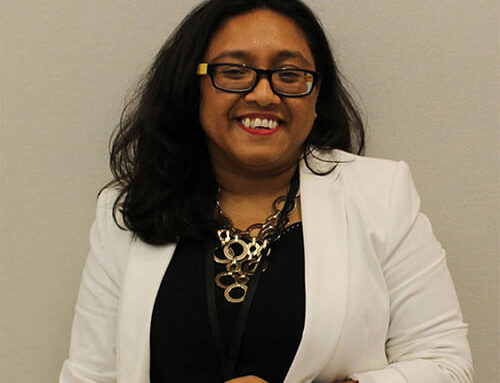Melina Kalamandeen, Amref Health Africa in Canada
I consider myself fortunate to have worked in global development for over 8 years now. I love what I do. I love meeting the change makers and influencers that are impacting and effecting the change needed to make this world better for their fellow members. I love getting to know the people behind the numbers and connecting names with faces.
My project visit to Siaya County in Kenya included a meeting with grassroots volunteers known as Community Health Workers (CHWs) or Volunteers. I had the opportunity to meet a group of passionate and engaging women CHWs from the Umala Community Unit in Ugunja Sub-country in Kenya. These CHWs are educating and empowering their fellow community members, especially women of reproductive age, on reproductive, maternal and child health issues including sexual and reproductive health and rights. The community sensitizations, which include structured dialogues and actions, help communities to take the lead in participatory actions such as increasing the number of pregnant women who are seeking out pre-natal care at local health facilities. They also help to strengthen the individual’s capacity to make informed decisions regarding their health.

Melina Kalamandeen with Community Health Workers and Volunteers in Kenya
Globally, there is a shortage of over 17.4 million health workers with the most severe staff shortages found in primary health care facilities in Africa and South-East Asia. (WHO, 2016 – https://www.who.int/hrh/resources/health-observer17/en/). Primary health care facilities are usually the first point of contact for people to receive basic health services, such as immunizations. In Canada, it would be the family doctor or walk-in clinic.
Community Health Workers and Volunteers are the bridge between the primary health care facilities and the communities, connecting and engaging people with much-need health information and services. Community Health Workers and Volunteers in many of the African communities where we work are often unpaid, are not recognized by the formal health system and lack the necessary training and skills in health care promotion and outreach.
But due to their willingness and interest in supporting the health of their communities, they eagerly volunteer their services and time. CHWs often carry out outreach activities and health education on topics such as maternal and newborn child health, clean water and sanitation, management of childhood illnesses, and nutrition for women, adolescents and children under five years. They also provide support to mothers and pregnant women and encourage men to actively participate in childcare and support. CHWs also aid in the collection of community health data and support the primary health care facilities’ actions. They conduct household visits and, in some cases, offer limited care services such as identifying malnutrition in children.
The Canada-Africa Initiative to Address Maternal, Newborn and Child Mortality (CAIA-MNCM) brings together Canadian and African expertise to tackle critical health issues in order to make pregnancy and childbirth safer across remote communities in Ethiopia, Tanzania, Malawi and Kenya. Working together with local country offices and Children Believe, The Centre for Global Child Health at The Hospital for Sick Children (SickKids) and WaterAid Canada, Amref Health Africa’s goal is to improve access to sexual and reproductive health services, train health workers and improve health facilities. The program is funded by Global Affairs Canada with support from other individual donors and foundations in Canada.
To date, the CAIA-MNCM program has trained more than 1,000 Community Health Workers and Volunteers to help to promote the health and wellbeing of communities. Furthermore, the program has also advocated for the remuneration of CHWs and recognition within the formal health system. Through the program’s advocacy efforts, the Siaya County Government in Kenya has finalized the Community Health Services Bill, which is currently undergoing public participation. Once the bill is fully signed, stipends for CHWs will be covered by law as a sustainability measure.
This week, Canada is marking International Development Week, highlighting the achievements and efforts of Canadian organizations and supporters within global development. This year’s theme focuses on “Go for the Goals” and the progress that is being made towards achieving the Sustainable Development Goals (SDGs), here in Canada and around the world, by 2030. As part of our work towards meeting the SDGs, this year Amref Health Africa in Canada will be showcasing the work being done by Community Health Workers and Volunteers.
You can see Community Health Workers and Volunteers in action in this documentary video filmed by students from the RTA School of Media at Ryerson University. The students volunteered their time and talent to create this though-provoking video, covering their own costs to visit CHWs in Tanzania as well as shoot, edit and produce the video. The CHWs featured in the video were trained by Amref Health Africa through the CAIA-MNCM program.
I was inspired by the smiles and the warm reception from our African colleagues and our community partners. I was encouraged to participate in their traditional dances and partake in their traditional meal – ugali, a Kenyan dish made from maize served with sukuma wiki (collard greens) and freshly caught fish – either boiled, baked or fried according to your preference. They were some of the wonderful memories of my visit to Kenya but most of all, I’m inspired by the CHWs’ enthusiasm for the work that they continue to do and the impact they continue to have on their communities.





